WORLD CLASS COACHING
4-2-3-1 Attacking
By Luca Bertolini
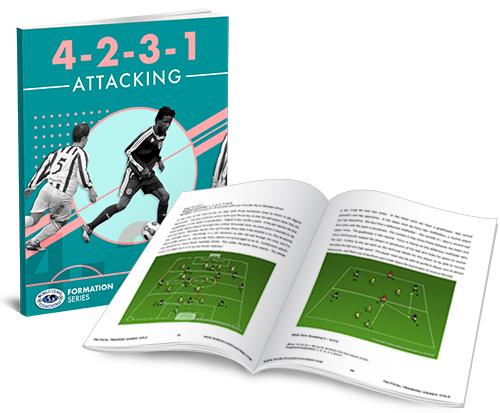
Table of Contents
PART TWO
Basic Principles of Play With the Ball
Basic principles of play with the ball
1. MOBILITY: players run into different areas of the field while being on and off the ball in order to invite defenders out of their positions, creating space and options for the ball carrier or where to dribble the ball through by creating gaps between the defense lines or among the players near the ball. In the 1-4-2-3-1 mobility is the key principle of play for the 5 middle third players and for the fullbacks. The center midfielders are asked to rotate to receive and to take on different tasks during possession phases.
• One center midfielder becomes play maker, receiving a pass after a dropping back run, and holding midfielder once he has passed the ball to protect the teammates at the back, and the second one becomes an advanced support to be an option to overcome the eventual opposition pressure:
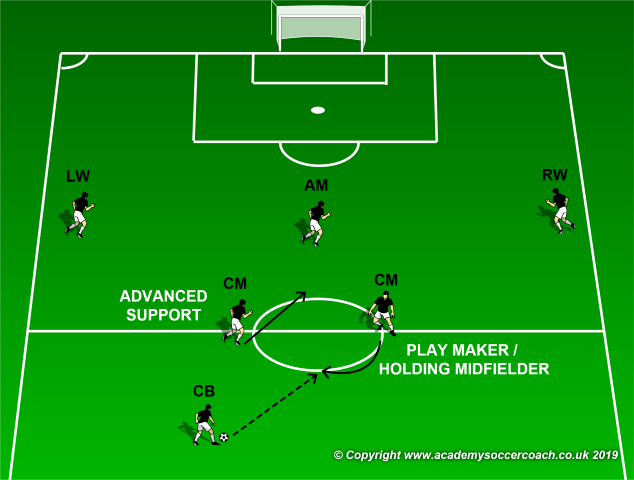
Here’s an example of lower play maker with possession (Milner)…
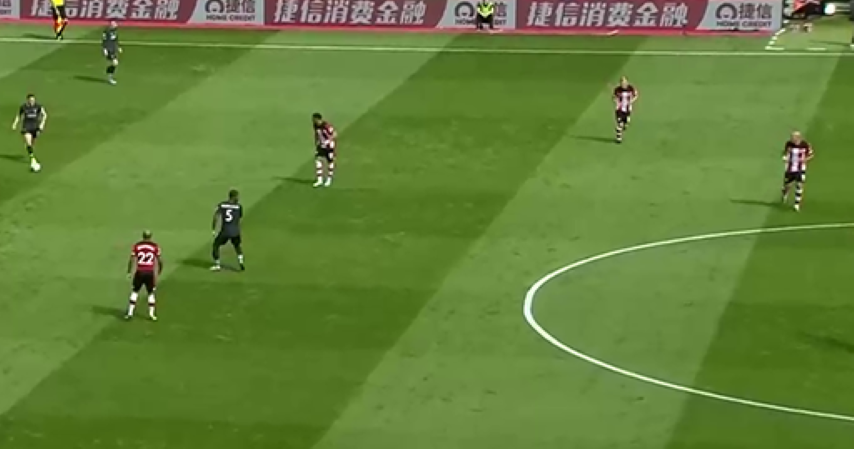
…and of a second center midfielder who receives behind an opposition pressure line of 2 players
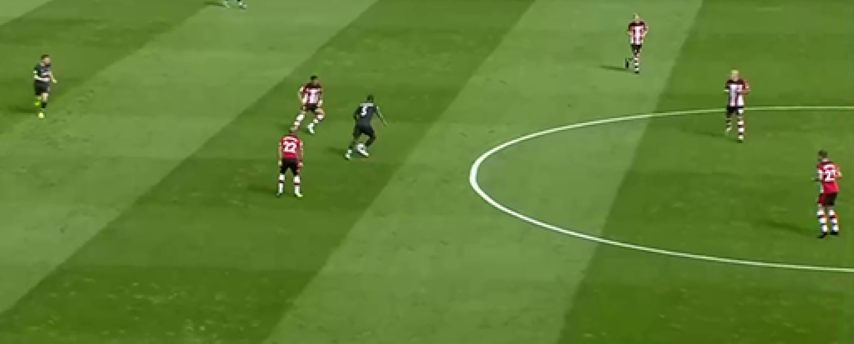
• If a forward penetrative pass that overcome a line of pressure is possible, the receiver becomes play maker, and the second one acts as holding midfielder to protect the teammates at the back and to be a back option to save the possession if the teammate is under pressure:
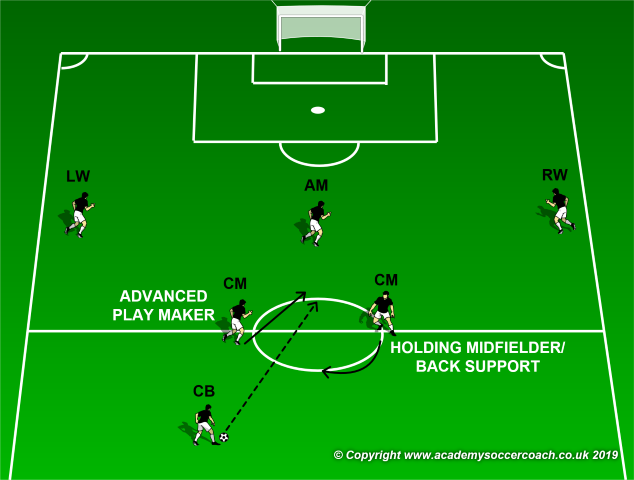
• If both midfielders have defensive tasks or skills and the advanced midfielder becomes the play maker, they must open up the space to allow the AM to receive:
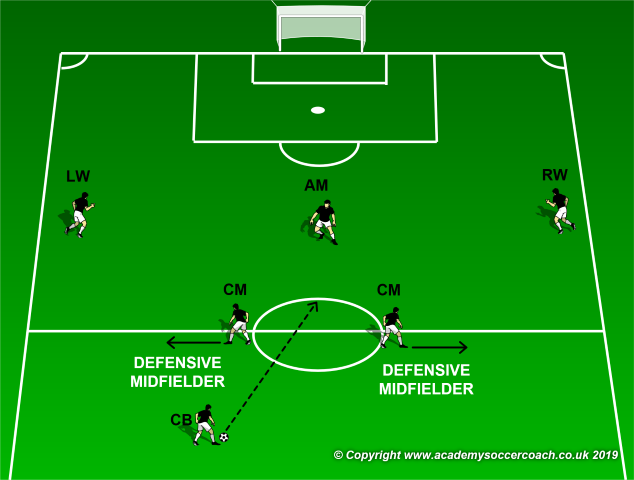
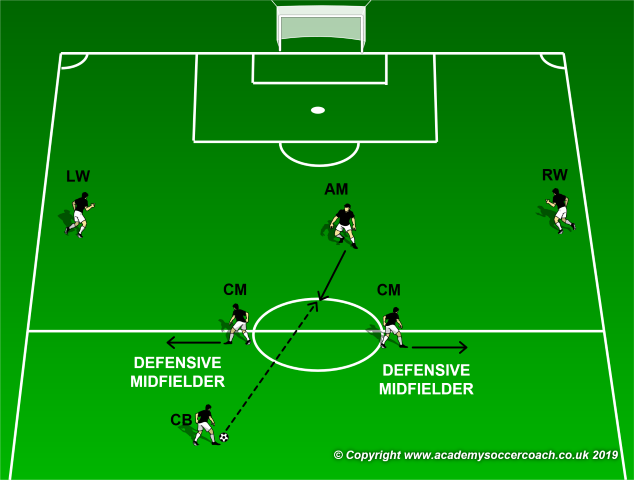
• When the advanced midfielder has the possession, after a dropping back run, a center space for the winger to move inside is supposed to be open, as well as space along the flank for the fullback.
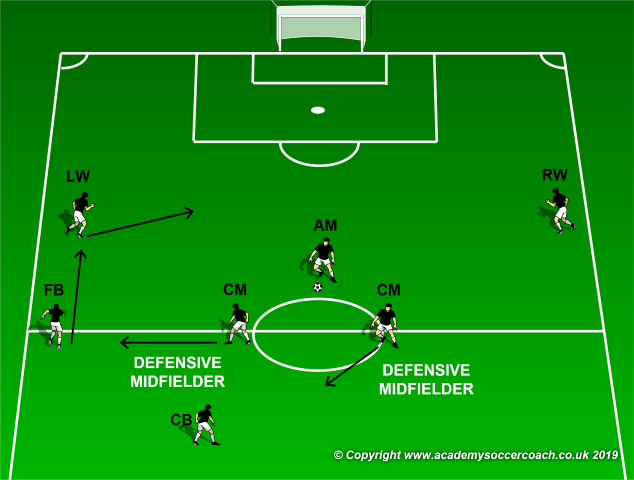
At this point the nearest center midfielder to the fullback who pushed up should shift wider to cover the space along the flank and to be a wide passing option for the ball carrier. The further midfielder should become the holding one to save the back line and to be a back passing option for the teammate with possession.
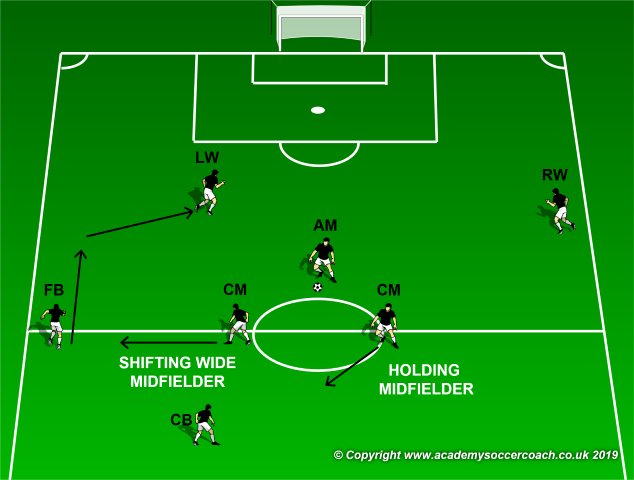
The most explicative example of these attacking movements can be taken from Jürgen Klopp’s Liverpool; despite the usual system of play for the Reds is the 1-4-3-3, the 1-4-2-3-1 is anyway a recurrent solution for Anfield’s team. These movements are anyway not strictly connected to the system of play.
In this first example, the center back Van Dijk has the possession and he is looking for an option to play forward, Milner is positioned as left fullback, giving Robertson the chance to push up the field along the flank
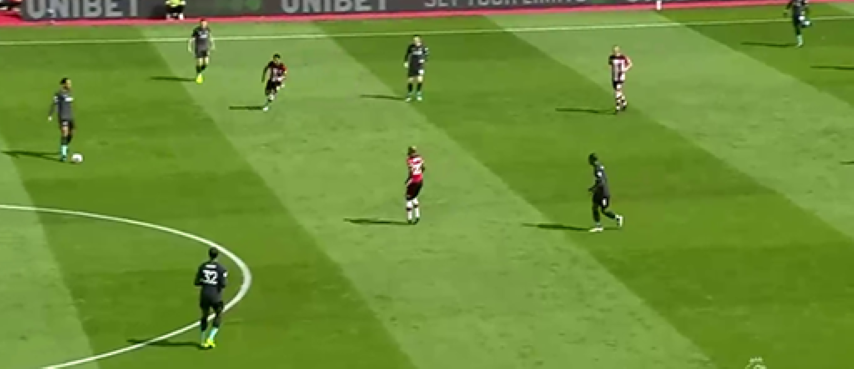
In this second example, the left center back Milner has received wide on the left, Robertson is placed higher on the field, from the other side of the ball line and the left winger Manè is moving inside, trying to open up spaces for the fullback.
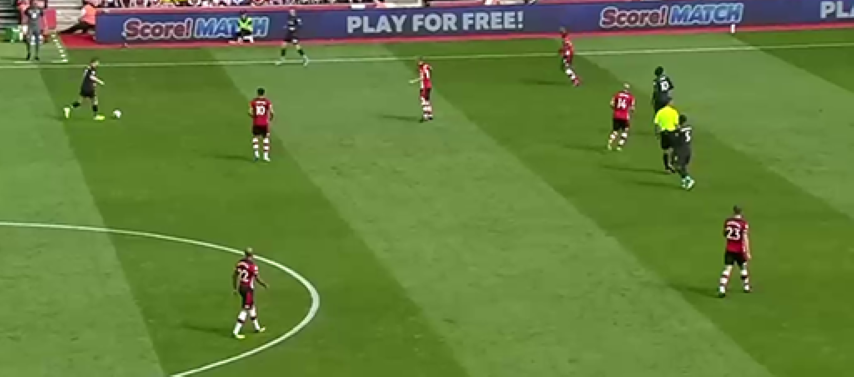
Despite the opposition has the numerical advantage near the ball, Milner can act as safe player along the flank, as well as holding midfielder, covering the center spaces by shifting across the center.
In this third one, Liverpool has just lost the possession on the right side of the middle third, and Wijnaldum is ready to cover the space as right fullback, as Alexander-Arnold has been found high on the field during the transition to defend phase
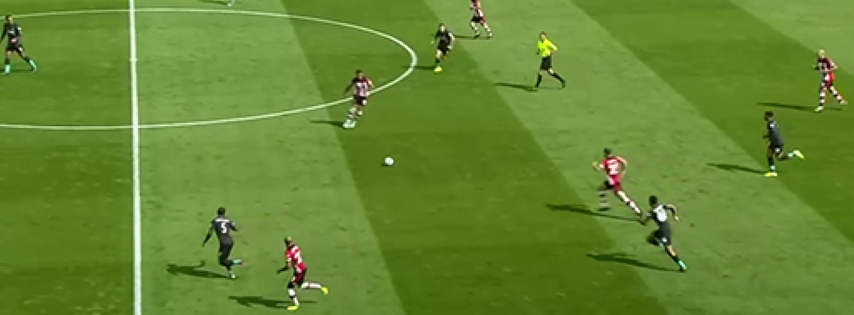
• The advanced midfielder is the “freest player” of the system from the mobility point of view, as he mainly has possession saving (as we already analyzed) and attacking tasks throughout the opposition half. The first and most important role is to play between the opposition lines to invite the last defenders out of position:
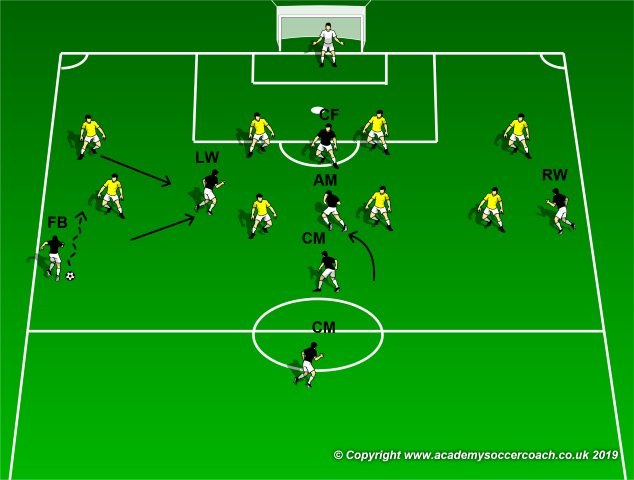
In this example, the left fullback is dribbling the ball up against a low defensive block of the opposition that is made of 2 lines of 4 players. The left winger run inside to try to open spaces wide and free the ball carrier in a 1 v 1 duel and the advanced midfielder runs up between the lines to create a 2 v 2 duel together with the center forward, against the center backs and past the opposition center midfielder.
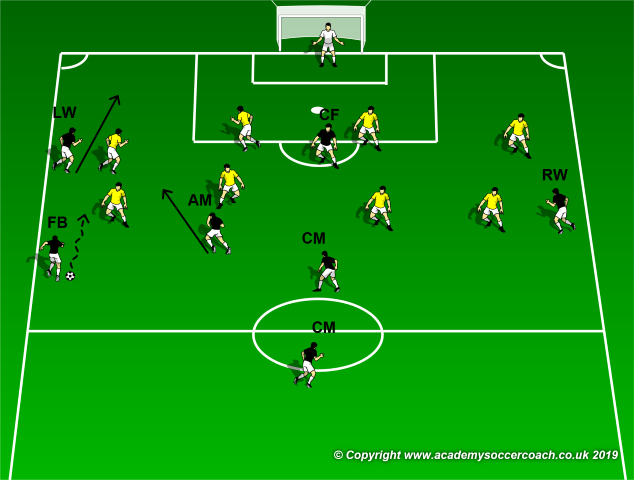
In this further example, the left fullback is again dribbling the ball up against a low defensive block of the opposition that is made of 2 lines of 4 players.
The left winger run deep along the flank to try to stretch the back 4 line and free space for the advance midfielder who moves between the lines, creating a 3 v 2 near the ball, against the opposition right winger and right fullback.
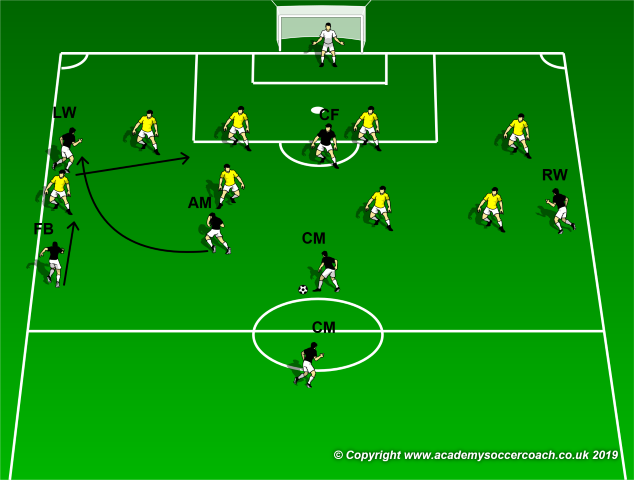
The upper center midfielder has the possession in this situation against a low defensive block of the opposition that is made of 2 lines of 4 players. The left winger run cuts inside and the advanced midfielder overlaps; this way the opposition right fullback must decide if to follow the winger or to block the overlap movement of the advance midfielder. The opposition center backs have the same issue; to double mark the center forward, when to move to close the winger.
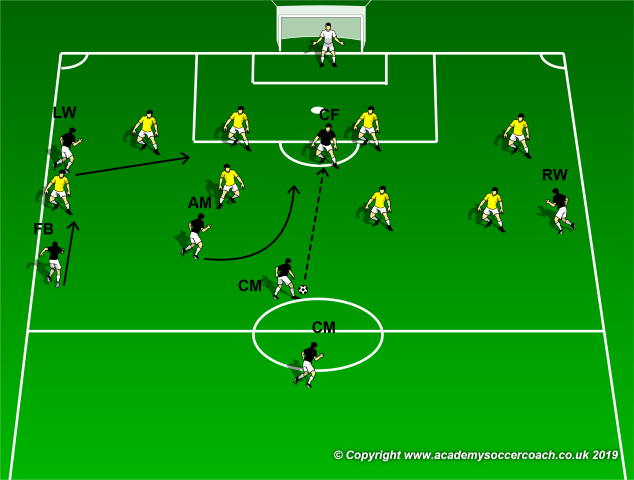
Again, the upper center midfielder has the possession in this situation against a low defensive block of the opposition that is made of 2 lines of 4 players. The left winger cuts inside toward the center back, opening spaces along the flank for the fullback to push up and the advanced midfielder moves between the lines to be a back support for the center forward, who is acting as target player, while receiving from the center midfielder.
This way the opposition right fullback must decide if to follow the winger or to block the pushing up movement of the fullback. The opposition center backs could be found outnumbered against the center forward, the advanced midfielder and the left winger; at least one midfielder should drop deep to equalize the duel.
2. WIDTH: the team attempts to stretch the opponent’s defensive shape, making the field as big as possible to create space, inviting the defenders out of their compact shape they have created to cover the dangerous areas in front of goal.
The team in possession moves the ball to change the point of attack to create gaps between or behind the defense. Width is strictly connected to mobility in terms of sideways support for the ball carrier and with depth, if we think about up and down runs of the fullbacks and wingers (Liverpool fullbacks are an interesting example of this connections). Width is crucial in stretching the opponent’s defensive compactness:
• If the defense remains compact in center area of the field, then there will be more opportunity to attack down the wings.
• If the defense block create strong wide areas near the ball down one wing, a weak side will be probably opened along the opposite side that could be exploited with a quick switch of side
• If the defense spreads out to counter the attacking team, then passing lanes are created, allowing penetration.
This is an example of team wide spaces creation, while the team is moving up the field, with simple principles of play that are very recurrent for Klopp’s Liverpool, whatever is the system of play (1-4-2-3-1 or 1-4-3-3).
• The fullbacks push up along the flanks toward the middle third during building up and possession phases and toward the final third to help the finishing stage of the moves
• One center midfielder drops back to act as play maker and holding midfielder; the second one become an advanced support player to penetrate the opposition midfielders line and to support the advanced midfielder.
• The wingers move inside the zone 14 to support the center forward, to increase the chances of center penetration of the last defense line and to open wide spaces, to allow fullback to penetrate down the flanks.
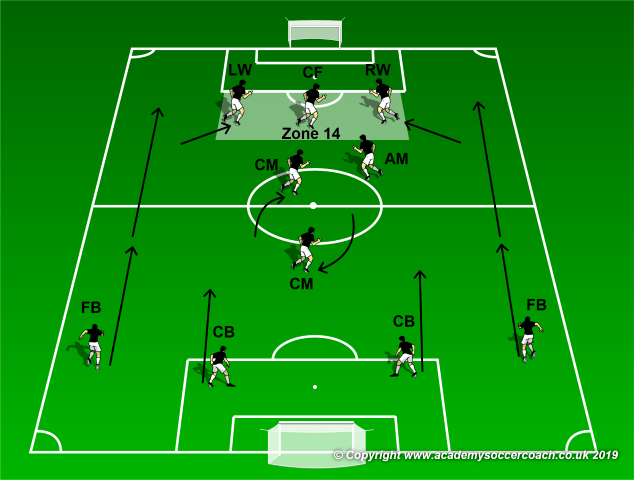
From this point of view, Bielsa with his Copa del Rey and Europa League runner up Athletic Bilbao and Guardiola as former Bayern Munich head coach were very revolutionary thinking about creation of wide spaces.
They asked their team to overload the center middle third with the inverted fullbacks, to place 2 midfielders up, touching the white side lines in the final third, creating with. One of the center midfielder usually dropped back between the center defenders, who were shifting wider, to provide balance at the back.
The attacking shape result was a 1-3-3-3-1 from a starting 1-4-2-3-1
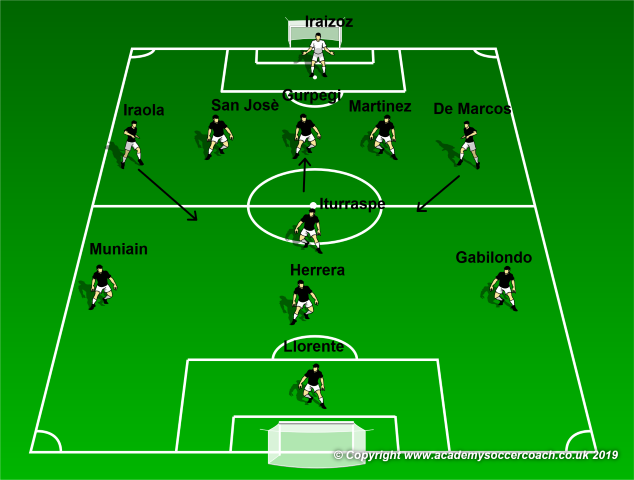
Bayern Munich tactical solution was to condense also the center final third through the inverted wingers, who started from the white sidelines when off the ball, and aiming to play in the center and near the goal, dribbling inside or moving between the lines.
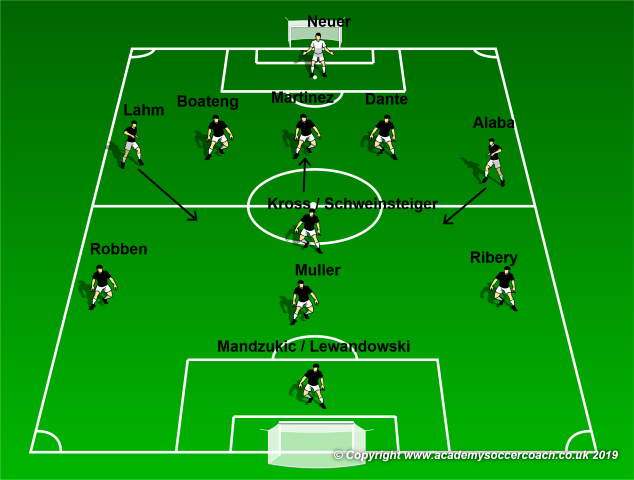
3. PENETRATION and DEPTH are the act of breaking through the defense lines to move the ball forward by dribbling, passing, combining between the lines with killer passes, shooting. The players are asked to be technically skilled and quick in decision-making. Depth movements in the 1-4-2-3-1 involve all the team but goalkeeper and center backs, usually. Wingers, advanced midfielder and center forward usually provide depth in the 1-4-2-3-1, basically in 6 ways:
1. Combining along and down the flank penetrating the opposition defense sideways to play cross passes toward the box.
2. The winger cut inside from the flank, inviting the marker out of position and creating a 1 v 1 chance for the fullback who is overlapping.
3. The winger can become a back support for the center forward, creating a front 3, being placed inside zone 14 or attacking the opposition goal.
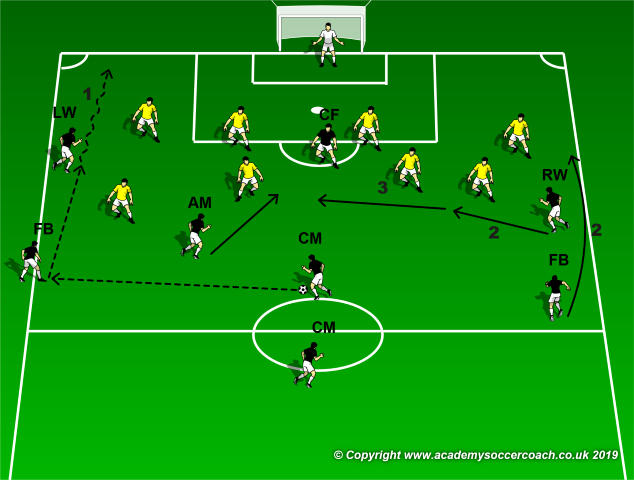
The inverted wingers (let’s think about Bayern Munich’s wingers, left footed Robben on the right and right footed Ribery on the left again) or the winger who becomes second forwards is very interesting, as width is useful as starting position to attack the opposition defense and penetrate it:
4. The inverted winger moves inside to receive between the lines to shot on goal
5. The winger runs inside from the flank and between the lines as second forward
6. The winger can now play as center forward behind the defense line, exploiting the movement of the center forward
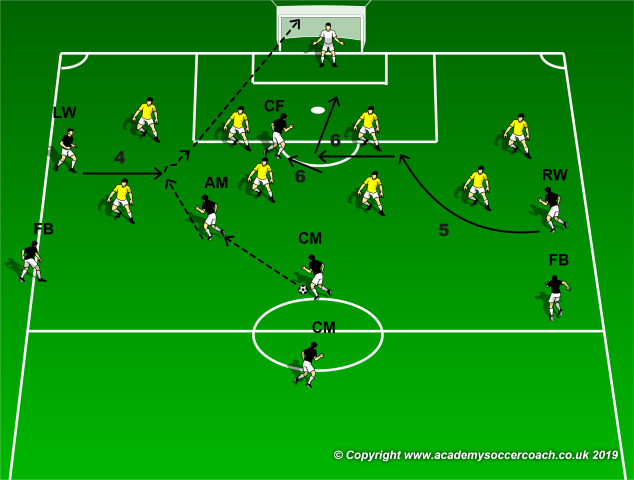
4. SUPPORT: all the ball carriers, in any situation of play need help to maintain possession or to progress the attacking move, creating space, options and passing angles forward, at the back or sideways the player in possession. 1-4-2-3-1 is very useful from this point of view, creating easy support combinations throughout the field. If we except the goalkeeper, who usually can have only forward and side supports, when in possession, the main attacking shapes of the 1-4-2-3-1 (1-3-3-3-1 or 1-3-3-3) ensure the players all the potential solutions:
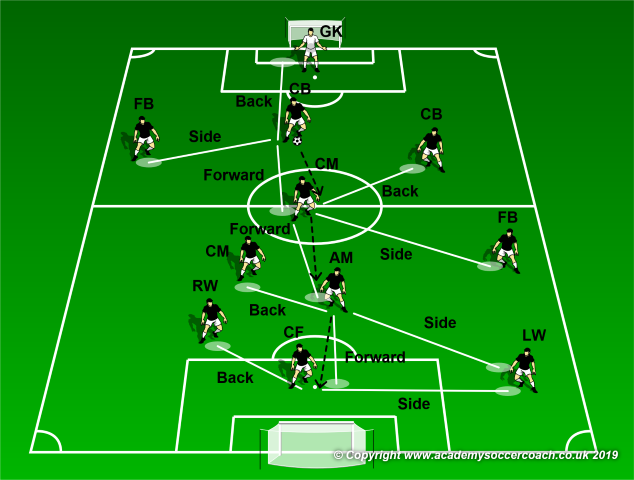
When CB has the possession, he can play with the GK as back support, with the FB as side option and the holding CM as forward pass; if the holding CM is placed between the CB, these are his side solutions and the second CM, the AM are usually the front options, as well as the FB is the side support.
As the first player in front of the back line has the possession (holding CM or CM), he has 3 options at the back (CB is indicated as example), FB as side support and all the front teammates (AM is indicated as example).
AM is the target player in the picture, and he can pass back to the midfield line (to second CM, as instance), to the W sideways and to the other front teammates (to CF, in the picture).
If the CF is the target player, he usually has back and sideways options (Ws in the example); if he plays as a false 9, Ws and AM become his front options, FBs sideways supports and the midfield line the back safe passes.
5. CREATIVITY: attackers try to break down defenses through surprise, individual actions or passing combination among advanced players in the attacking third of the field. The risk of the 1-4-2-3-1 system of play is to demand creativity to the advanced center midfielder behind the forward and to consider him as the only possible No.10 of the team, asking the wingers to push up along the flanks and to cut inside if they are inverted wingers. This is more true if we consider the 1-3-3-3-1 and the 1-3-3-1-3 as the only possible tactical developments during possession phases.
Looking back to some of the most important teams that were shaped with the 1-4-2-3-1 on the field, it is possible to understand how creativity can be found in all the players and in all the sectors of the 1-4-2-3-1 and of its offensive developments.
Guardiola’s Bayern Munich was creative through the inverted fullbacks in the middle third and through the inverted winger, while the advanced player of the front 3was usually a second center forward (Muller or Götze together with Lewandowski). The inverted fullbacks and the numerical advantage in the half spaces were themselves creativity and the keys for surprise.
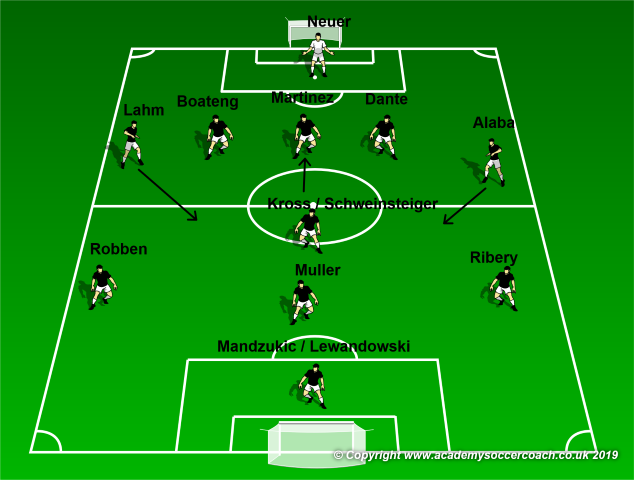
The European Champion Liverpool demands creativity to the fullbacks while pushing up and down, as there’s no a real No.10 in the squad after the Coutinho’s depart in 2017. Firmino may be considered as the creative player for Reds, and he is really like that from a finishing point of view, but he becomes a target player to save the possession dropping back from the opposition defense line, while Liverpool has the possession. The midfielders are very skilled in distribution, but they are not decisive in providing assists to the teammates. The proof is that Trent Alexander-Arnold and Robertson are the first two assists men of the entire squad.
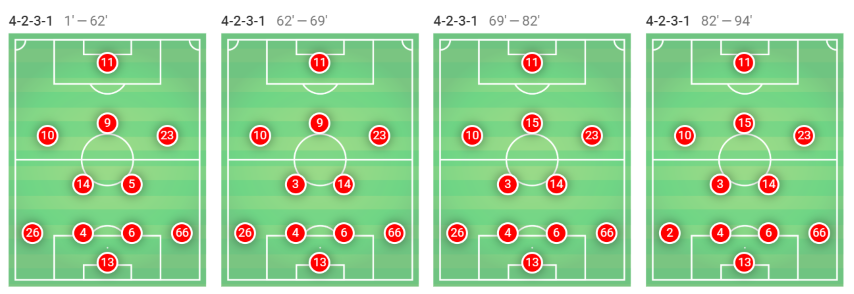
The wingers in Liverpool’s 1-4-2-3-1 are inverted to condense the center final third and the zone 14, leaving spaces along the flanks to push up; neither Manè (10) nor Shaqiri (23) are No.10 players and Firmino (9) skills make him a second forward, not a real No.10s.
Klopp’s Borussia Dortmund, 2013 Champions League final runner up was a creative team thanks to counter-pressing in defensive transitions, quick ball recovery and fast counter attacks through open spaces.
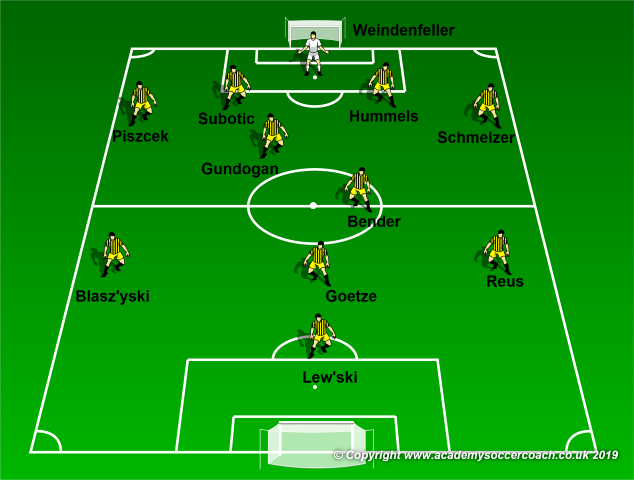
Calling back in mind the style of play of Klopp’s Borussia Dortmund, only Götze and Lewandowski were not pressing players and Gundogan was often the first player to receive a pass after a transition to attack; all the others were all field pressing player to create surprise in the opposition just after loss of possession.
Klopp was used to say that counter-pressing allows to win the ball back just 1 pass away from the opposition goal and that the spaces is the better play maker possible; these were the creativity keys of that Borussia Dortmund.
Searching for 1-4-2-3-1 team with a proper No.10, we may consider the last Wenger’s Arsenal, where Ozil was the main assist man behind Aubameyang and between Walcott and Sanchez or the 2010 Champions League winners Internazionale Milan, where Snijder was most creative players of defensive minded 1-4-2-3-1.
1-4-2-3-1 allows to find chances of creativity all over the field; it’s up the coach and the players’ skills, without demanding it to a precise player or role.


